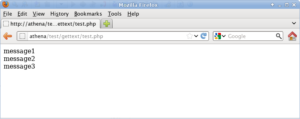
- #POEDIT NEW TRANSLATION INSTALL#
- #POEDIT NEW TRANSLATION UPDATE#
- #POEDIT NEW TRANSLATION CODE#
- #POEDIT NEW TRANSLATION DOWNLOAD#
Cash on delivery – navigate to WooCommerce / Settings / Payments, select Cash on delivery payment method, open its settings, and rename the method title, description, and instructions with the actual translation.Local pickup – navigate to WooCommerce / Settings / Shipping / Shipping Zones, select the shipping zone where Local pickup is added, open Local pickup settings, and rename the method with the actual translation.For example, to fix the strings in our case above, you would need to do the following:
#POEDIT NEW TRANSLATION UPDATE#
In order to fix it, navigate to WooCommerce settings corresponding to the string you need to change and update the translation there directly. Therefore, if the site language is changed to another one, there is no way for WooCommerce to detect a translatable string since these are database entries. In WooCommerce, the strings that have not been translated in the screenshot, are stored in the database after the initial WooCommerce installation.
#POEDIT NEW TRANSLATION INSTALL#
This usually happens when you first install WooCommerce and select default site language (English) and later change the site language to another one. For example, in the screenshot below, Local pickup shipping method, Cash on delivery payment method and a message related to Privacy Policy are not being translated to Russian while the rest of the form is indeed translated: You may see that some of the strings are not being translated on the Checkout page.
#POEDIT NEW TRANSLATION CODE#
View the plugin source code to see the exact string.įAQ ↑ Back to top Why some strings on the Checkout page are not being translated? ↑ Back to top Original string - text you are translating.Using the Say What? plugin can assist if you only wish to translate or change a few words without editing a WordPress theme’s. But if you wish to include a custom translation, you can use the directory wp-content/languages/woocommerce, or you can use a snippet to load a custom translation stored elsewhere: View on Github Translating text without a localization file ↑ Back to top Translate or replace default text ↑ Back to top WooCommerce keeps translations in wp-content/languages/plugins, like all other plugins. We are unable to provide support for customizations under our Support Policy. If you are unfamiliar with code/templates and resolving potential conflicts, select a WooExpert or Developer for assistance. po file by opening it and then go to Catalog > Update from POT file.ħ/ Choose the file and it will be updated accordingly. mo file is generated automatically.Ħ/ Update your.

Downloading translations from manually ↑ Back to topġ/ Go to and look for your language in the list.Ģ/ Click the title to be taken to the section for that language.ĥ/ Save after translating strings.

If you’re new to translating, checkout the translators handbook to get started.
#POEDIT NEW TRANSLATION DOWNLOAD#
If there is no 100% complete translation you can download it manually, or we encourage you to contribute to get it to 100% so all users can benefit. When you install or update WooCommerce, WordPress will look for a 100% complete translation in your language and automatically download it. Stable versions and development versions of WooCommerce are translated here, and anyone can contribute. Translation is managed by teams over at. Translating WooCommerce into your language ↑ Back to top If you want to contribute translated strings to your language or wish to start a new translation, register at and start translating. We maintain translations at our project on GlotPress. Otherwise, you need to create the language files (process explained below). Once this has been done, the shop displays in your locale if the language file exists. Go to: Dashboard > Updates and click on the Update Translations button.Go to: Dashboard > Settings > General and change the Site language.WordPress needs to be told which language it should run. Set up WordPress in your language ↑ Back to top The easiest method is to use a plugin called Loco Translate.īoth methods are covered in this doc.In most cases you can contribute to the project on.

There are several methods to create a translation, most of which are outlined in the WordPress Codex. All that’s needed is a translation file for your language. WooCommerce is already translated into a few languages and does come translation-ready out of the box.


 0 kommentar(er)
0 kommentar(er)
